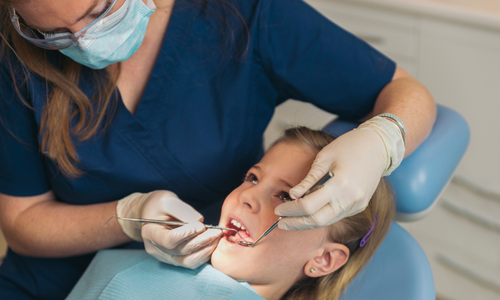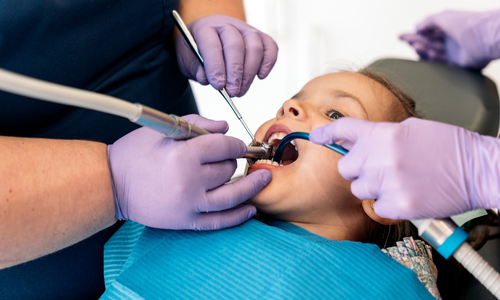Tooth extraction in children is the process of removing a primary or, in some cases, a permanent tooth by a dentist due to decay, infection, trauma, or orthodontic reasons. This procedure is performed to preserve the child’s oral health, relieve pain, and prevent future complications.
When Is Tooth Extraction Necessary in Children?
-
Deep, untreatable dental caries
-
Dental abscess or widespread infection
-
Teeth damaged due to trauma
-
Retained primary teeth blocking erupting permanent teeth
-
Creating space before orthodontic treatment
Tooth extraction is always considered a last resort. If the tooth can be saved, a filling or root canal treatment is preferred first.
How Is Tooth Extraction Performed in Children?
-
Evaluation: The dentist examines the tooth roots and surrounding tissues using X-rays.
-
Anesthesia: Local anesthesia is applied to ensure the child feels no pain.
-
Tooth Removal: The tooth is gently loosened and extracted with special instruments.
-
Gauze Application: A gauze pad is placed on the extraction site to control bleeding.
The procedure is usually short and carried out in a child-friendly, comfortable manner.
Post-Extraction Care for Children
-
The gauze pad should remain in place for the first 30 minutes.
-
No eating or drinking for at least 2 hours after the extraction.
-
Warm, soft foods should be preferred.
-
Avoid rinsing the mouth, using a straw, or spitting on the same day.
-
Continue brushing teeth carefully, avoiding the extraction site.
Frequently Asked Questions (FAQ)
Will a new tooth replace a primary tooth that is extracted?
If a baby tooth is extracted too early, it may affect the eruption of the permanent tooth. In such cases, space maintainers may be needed.
Is the procedure painful for children?
No. Thanks to local anesthesia, the child will not feel pain during the procedure.
How long will it take for my child to recover?
Initial healing begins within 1–2 days. Full healing typically takes about one week.







.png)
